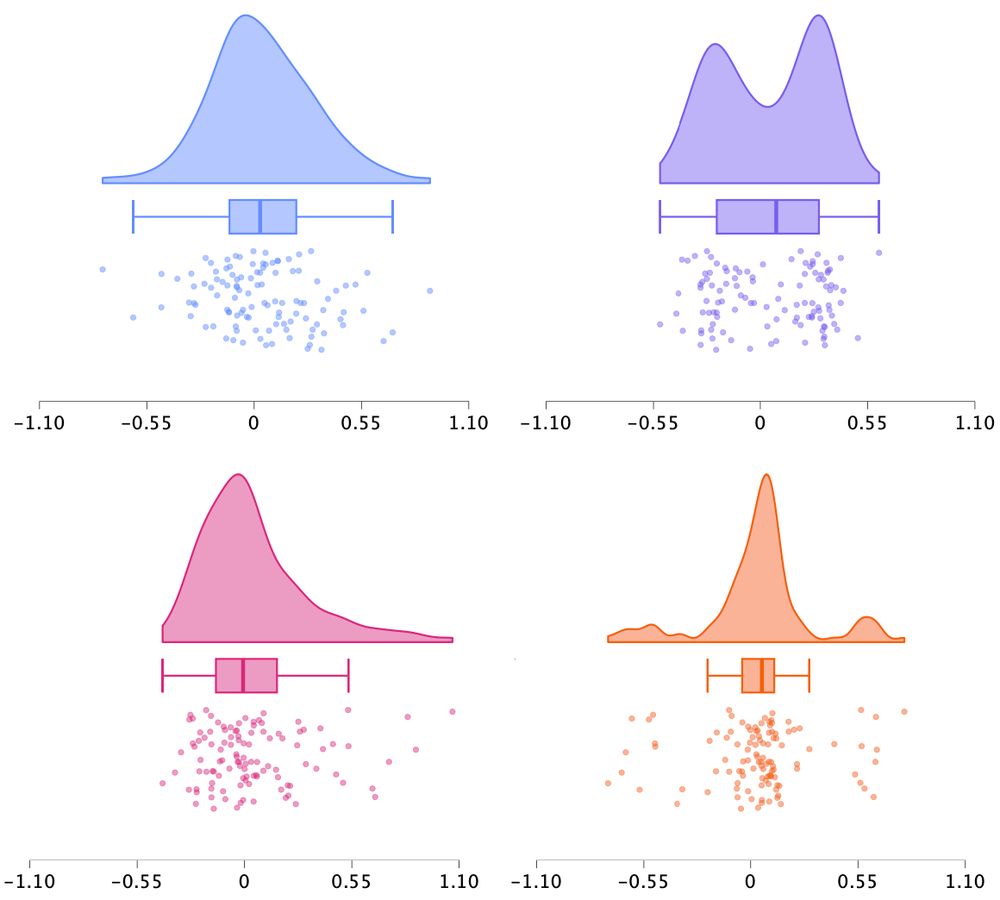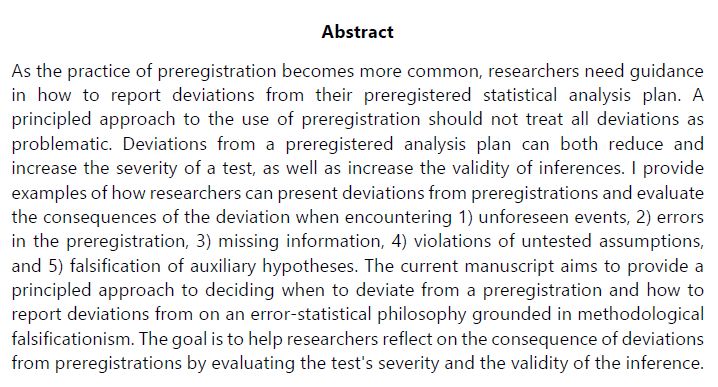After 4 years at the University of Tübingen and 5 years at @lborodme.bsky.social, he returns to Jagiellonian University to lead the lab with @mateuszhohol.bsky.social. Welcome to the team!

royalsocietypublishing.org/doi/10.1098/...

royalsocietypublishing.org/doi/10.1098/...
All N = 111, M = 0.04, SD = 0.27.
One-sided t-tests vs. 0 yield: t(110) = 1.67, p = .049.
Only raincloud plots reveal the qualitative differences, preventing the drawing of inappropriate conclusions.
How did we create the quartet?
Where are data & code?
🧵👇


All N = 111, M = 0.04, SD = 0.27.
One-sided t-tests vs. 0 yield: t(110) = 1.67, p = .049.
Only raincloud plots reveal the qualitative differences, preventing the drawing of inappropriate conclusions.
How did we create the quartet?
Where are data & code?
🧵👇


All N = 111, M = 0.04, SD = 0.27.
One-sided t-tests vs. 0 yield: t(110) = 1.67, p = .049.
Only raincloud plots reveal the qualitative differences, preventing the drawing of inappropriate conclusions.
How did we create the quartet?
Where are data & code?
🧵👇


@pci-regreports.bsky.social
paper, charges £1400 (via institutional deal) for publishing it (AKA making a pdf of it). They keep sending back submission e.g., should be submitted as Stage 1 even though it is stage 2 ("this is their process")
@pci-regreports.bsky.social
paper, charges £1400 (via institutional deal) for publishing it (AKA making a pdf of it). They keep sending back submission e.g., should be submitted as Stage 1 even though it is stage 2 ("this is their process")
“Estimates of both internal consistency and retest reliability lead to the conclusion that the dot probe task is a completely unreliable measure of attentional allocation”
(Via @ruben.the100.ci)
journals.sagepub.com/doi/abs/10.1...

“Estimates of both internal consistency and retest reliability lead to the conclusion that the dot probe task is a completely unreliable measure of attentional allocation”
(Via @ruben.the100.ci)
journals.sagepub.com/doi/abs/10.1...
Raises very serious questions about the literature (how did so many find positive relations between this task and other variables).
#PsychSciSky

Raises very serious questions about the literature (how did so many find positive relations between this task and other variables).
#PsychSciSky

Together with M. Hohol and P. Szymanek
Together with M. Hohol and P. Szymanek
@lillyroth.bsky.social
. If you ever wondered whether there is a SNARC effect in the colour judgment task, you can learn it from this study (n > 700): osf.io/preprints/ps...
@lillyroth.bsky.social
. If you ever wondered whether there is a SNARC effect in the colour judgment task, you can learn it from this study (n > 700): osf.io/preprints/ps...
Great resource for university lecturers, instructors, students, and anyone who want to acquire practical skills in conducting psychometric analyses.
annabrown.name/book_psychom...

Great resource for university lecturers, instructors, students, and anyone who want to acquire practical skills in conducting psychometric analyses.
annabrown.name/book_psychom...
@CORTEXjournal!
This easy-to-grasp checklist will help to increase transparency & standardize data processing prior to statistical analyses.



